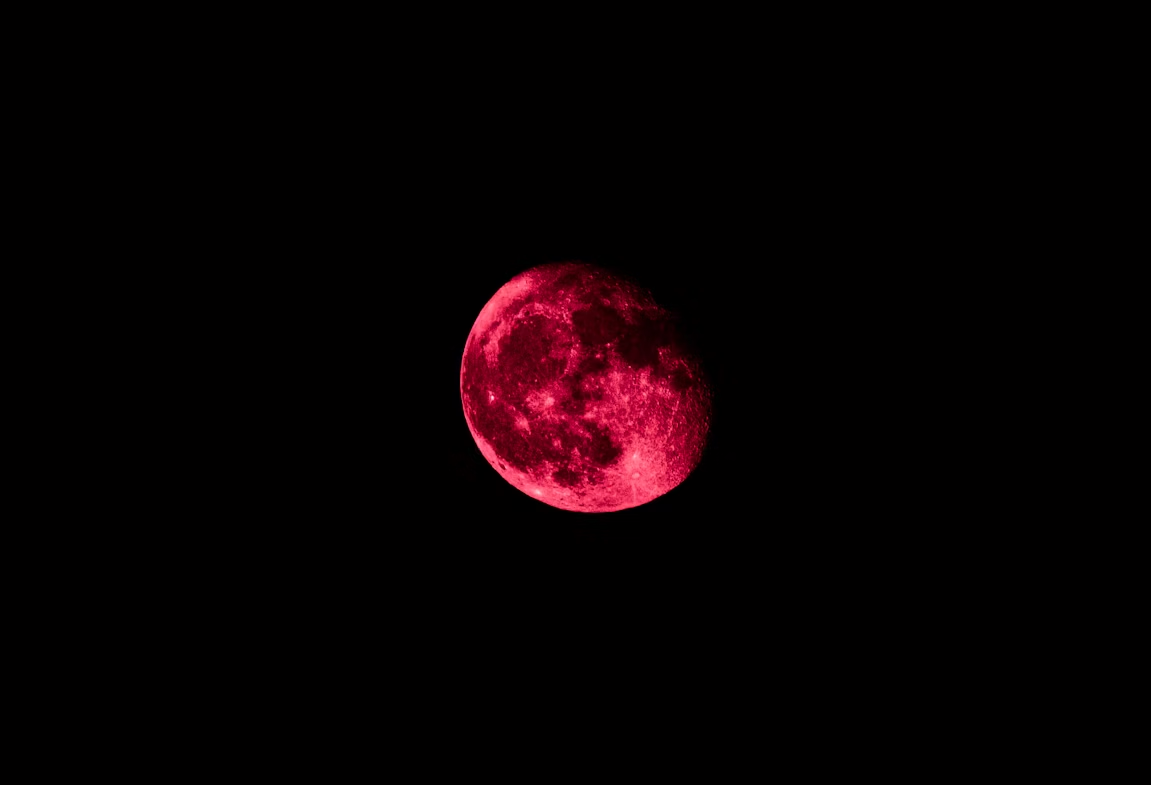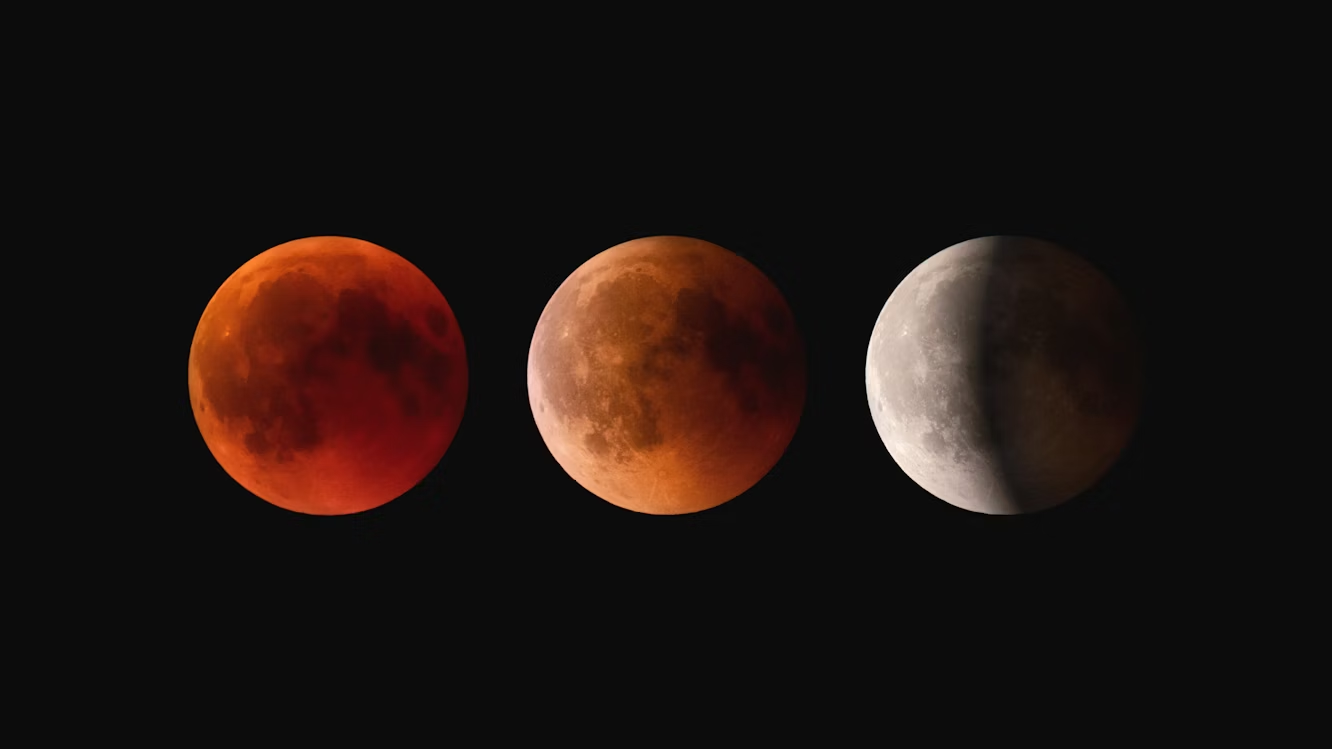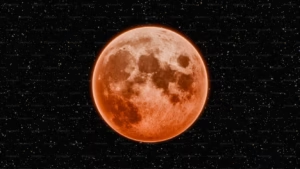A Blood Moon is one of the most striking sights in the night sky. This term describes a total lunar eclipse, when the Earth moves directly between the Sun and the Moon. Instead of going dark, the Moon glows a deep red or orange, creating a dramatic view that has inspired science, culture, and myths throughout history.

What Is a Blood Moon?
A Blood Moon occurs during a lunar eclipse, when the Earth’s shadow completely covers the Moon. Unlike a solar eclipse, this event is safe to watch with the naked eye.
The red color happens because sunlight bends through Earth’s atmosphere before reaching the Moon. Shorter wavelengths of light, like blue and violet, scatter away. Longer wavelengths, like red and orange, pass through and paint the Moon with a coppery glow.
Why Does the Moon Look Orange or Red?
Sometimes the Moon appears orange even outside of an eclipse. This happens when it is low on the horizon and its light must travel through a thicker layer of atmosphere. The same process that makes sunsets red — known as Rayleigh scattering — also makes the Moon appear orange.
Dust, smoke, volcanic ash, or pollution in the air can make this effect stronger, giving the Moon an intense orange-red look. This is why news reports often explain why the Moon looks orange or red on some nights.
How to See the Blood Moon
Unlike a solar eclipse, you don’t need special glasses to see a Blood Moon. The best advice is to find a high spot with a clear view of the horizon.
During the upcoming lunar eclipse, observers across Asia, Australia, Europe, and Africa will have some of the best views. In the UK, for example, the Moon will rise during the eclipse, with maximum visibility in the early evening. For details on who can see the eclipse in different regions, check out this guide to the lunar eclipse.
Blood Moon vs. Orange Moon
A Blood Moon is a specific type of lunar eclipse that always involves Earth’s shadow. An “orange moon,” on the other hand, can happen any night due to atmospheric conditions. While both appear similar, the Blood Moon is rarer and occurs only during a total lunar eclipse.

How Planetary Colours Compare
The way the Moon turns red during a Blood Moon is closely related to the way planets show different colors. Each planet reflects sunlight differently depending on its atmosphere, surface composition, and distance from the Sun.
For example:
- Mars looks red because of iron oxide (rust) on its surface.
- Jupiter appears striped with browns and reds due to clouds of ammonia and other gases.
- Neptune looks blue because methane in its atmosphere absorbs red light and reflects blue.
This same principle of light scattering and reflection explains why we see such vivid changes in our skies. If you’re interested in learning how these processes affect other worlds, you can explore the Colours of the Planets to see how science explains the rainbow of appearances across our solar system.
Myths and Cultural Meaning
Throughout history, Blood Moons have been seen as powerful omens. Many ancient cultures linked them to gods, battles, or prophecy. In astrology and spiritual traditions, they are sometimes seen as a time of change or emotional intensity.
Whether viewed scientifically or symbolically, the Blood Moon continues to capture human imagination around the world.
FAQs
Why is it called a Blood Moon?
It is called a Blood Moon because the Moon appears red during a total lunar eclipse, caused by Earth’s atmosphere filtering sunlight.
How often does a Blood Moon happen?
On average, there are two to four lunar eclipses per year, but total lunar eclipses — the ones that create a true Blood Moon — are less frequent.
Is it safe to look at a Blood Moon with the naked eye?
Yes, unlike solar eclipses, a Blood Moon is completely safe to watch without protective glasses.
What is the difference between a Blood Moon and an orange moon?
A Blood Moon happens only during a total lunar eclipse, while an orange moon can occur on any night due to atmospheric scattering.
When is the next Blood Moon?
The next visible Blood Moon will depend on your location, but global astronomical calendars list eclipse dates years in advance.
Does a Blood Moon have spiritual or cultural meanings?
Yes, in many traditions it is seen as a sign of change, transformation, or prophecy.
Final Word
A Blood Moon is more than just a colorful moon. It combines astronomy, atmospheric science, and culture in a single breathtaking event. Knowing when and how to watch helps you enjoy it safely — and understand the science behind the spectacle.
Share this content:













Post Comment
You must be logged in to post a comment.